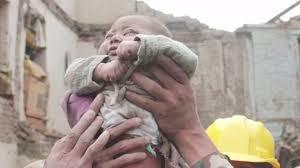
At about noon on Saturday April 25, I was doing what I usually do, playing with children at the Phul Kumari Mahato Memorial Hospital (PKMMH) library in Karjanha, Siraha. It had been somewhat of a rainy day and some of the children and I were sitting on cement steps adjacent to the library playing "Go Fish", a card game that I had recently taught them. Go Fish, along with war, which some call "worms" or "1-2-3" because we say one, two, three before we all turn over our cards have all become popular amongst the children. I suddenly heard and saw the steel roll away door that are at the top of the steps start to shake, as well as, feeling the cement steps shaking under my bottom. After a few seconds I said to the kids, "earth quake".
My entire being is very sad for the country which I've lived in and come to love during the past three years. There is so much loss everywhere. I'm trying to help from Karjanha, Siraha connecting some international NGOs, doctors and local NGOs to not only provide earthquake relief but to also rebuild after the world has forgotten about Nepal. This will occur very quickly as humanitarian disasters are a consistent part of the world in which we live. But I can't do enough.
In the article Don’t rush to Nepal to help. Read this first, Claire Bennett of the Guardian wrote,
"Something that has been much discussed in the international aid community is the lack of coordinated response to the Haiti disaster. Ragtag brigades of well-intentioned do-gooders flooded the country: students, church congregations, individuals who had previously vacationed in the area, all clambering over one another looking for a way to make their mark and do good, but lacking either the skills or coordination to have an impact. Indeed, many ended up slowing down the aid efforts. One of the biggest problems with relief work is that it is a free-for-all. Anyone who wants to, and who is privileged enough to afford a plane ticket, can pitch up."
But what is the best way to help? As a global community, we all need to help Nepal and bring resources and partnerships so that the country does not have the same experience as Haiti in 2010. Coordination among the Governments of Nepal and other countries, local NGOs and civil society groups and international organizations must occur. Especially in this time of chaos, is this really possible so that people impacted can be helped in a timely fashion? As aid workers, who come in and out of a country, what is it that we should really be doing to help? How do we really cooperate with the government and civil society organisations to do what they feel is right?
I and many others talk a lot about and try to practice capacity building of ourselves and our colleagues, but this takes a long time and there must be a willingness from all sides to learn about others and how they do things differently from us. Can this disaster lead to further acceptance and modalities for ensuring that new buildings are earthquake proof and those still standing can be retrofitted? Can we partner with those with expertise in disaster preparedness to teach people throughout the country how to be ready for the next time? Will we provide help to those who no longer have homes to rebuild their lives? Can we train more health workers, especially in remote areas, to take care of immediate needs? Because of this disaster can we come together and like a phoenix rise out of the ashes to create a great Nepal, one in which, there is more cooperation, no matter who we are or represent?
No matter what it will take a long time to recover and questions will always remain. This is still a rural country with many people living in villages with brick, mud or wood homes. There will be more earthquakes, it's the geology of the area. However, hopefully next time there we will be more prepared and more lives and buildings will be saved.










Add new comment